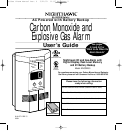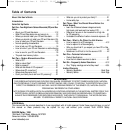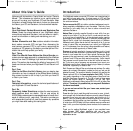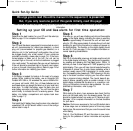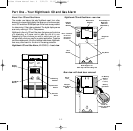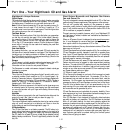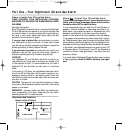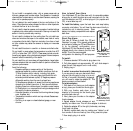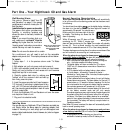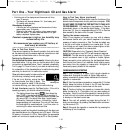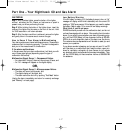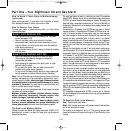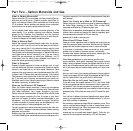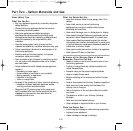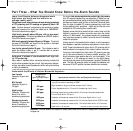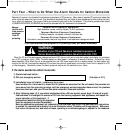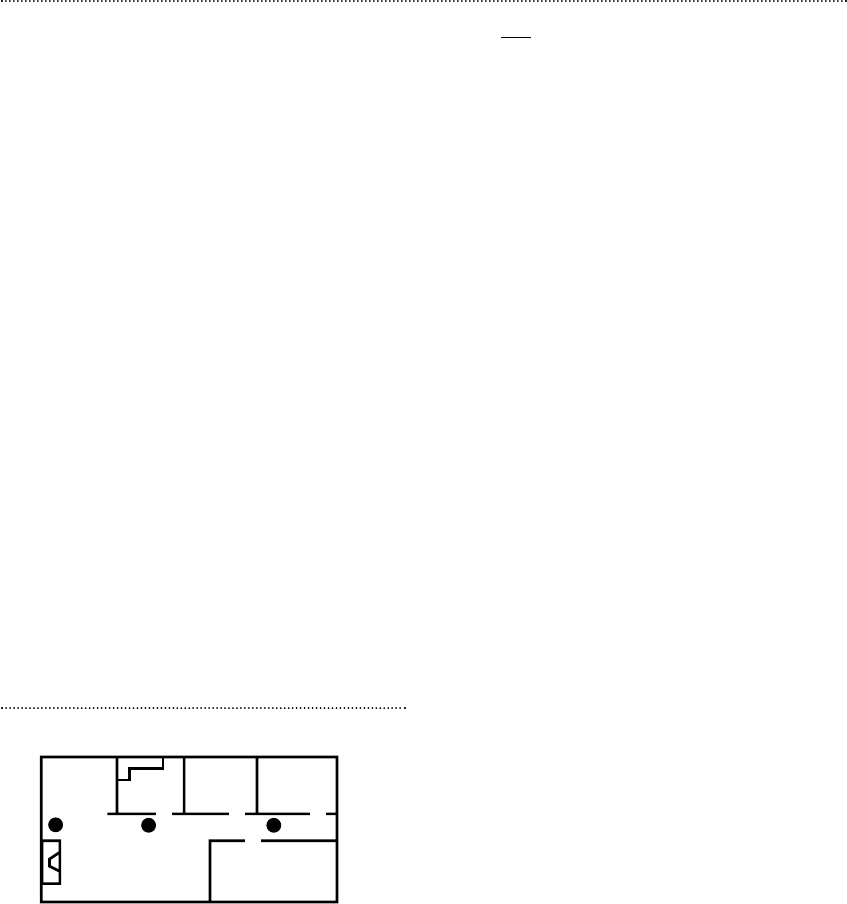
Part One – Your Nighthawk CO and Gas Alarm
Where to Install Your CO and Gas Alarm
WHEN CHOOSING YOUR INSTALLATION LOCATIONS,
MAKE SURE YOU CAN HEAR THE ALARM FROM ALL SLEEP-
ING AREAS.
Mounting Configuration
Since CO generally mixes well with air, mounting the Nighthawk
CO and Gas alarm should depend on the type of explosive Gas
you intend to detect. If you are not certain which type of Gas you
are using in your home, please read about natural Gas and
propane in the introduction on page i.
If you are a user of natural Gas, we recommend you mount
your Nighthawk unit high on the wall (no closer than 6 inches
from the ceiling) using the extendable cord feature to ensure the
earliest opportunity to detect a Natural Gas leak.
If you are a user of propane, we recommend you mount your
Nighthawk near the floor (using the direct plug-in feature) to
ensure the earliest opportunity to detect a propane leak.
LOCATION
Your Nighthawk CO and Gas alarm should be mounted in or
near bedrooms and living areas or wherever you suspect a CO
or Gas exposure is likely. It is recommended that you install a
Nighthawk CO and Gas alarm on each level of a multi-level
home.
In the event of a CO alarm, two self-adhesive labels are includ-
ed with the CO and Gas alarm. Add the phone number of your
emergency service provider in the space provided. Place one
label next to the alarm and one label near a fresh air source such
as a door or window.
CAUTION: This alarm will only indicate the presence of carbon
monoxide or Gas at the sensor. Carbon monoxide or Gas may be
present in other areas.
IMPORTANT: Improper location can affect the sensitive elec-
tronic components in this alarm. Please see the next section
describing where NOT to install this alarm.
1-3
Where Not
to Install Your CO and Gas Alarm
To avoid causing damage to the unit, to provide optimum pro-
tection, and to prevent unnecessary alarms, follow the direc-
tions below where NOT to install this alarm:
It is not recommended that you install this CO and Gas alarm in
garages or kitchens. Installation in these areas could lead to nui-
sance alarms, may expose the sensor to substances that could
damage or contaminate it, or the alarm may not be heard by
persons in other areas of the home, especially if they are sleeping.
In the garage, vehicle exhaust can contain some carbon monox-
ide. These levels are higher when the engine is first started. Within
hours of starting a vehicle and backing it out of the garage, the lev-
els present over time can activate the alarm and become a nuisance.
In the kitchen, some Gas appliances can emit a short burst of CO
or Gas upon start-up. This is normal. If your CO and Gas alarm is
mounted too close to these appliances, it may alarm often and
become a nuisance.
If you must install a Nighthawk CO and Gas alarm near a cooking
or heating appliance, install
AT LEAST
5 feet away from appli-
ance.
Recommended Locations
Upper Levels of Home
DINING KITCHEN BEDROOM BEDROOM
BEDROOMLIVING ROOM
CO/Gas Alarm Manual Rev. C 3/21/01 11:37 AM Page 8



